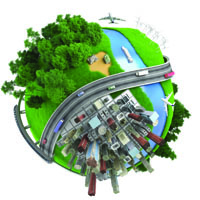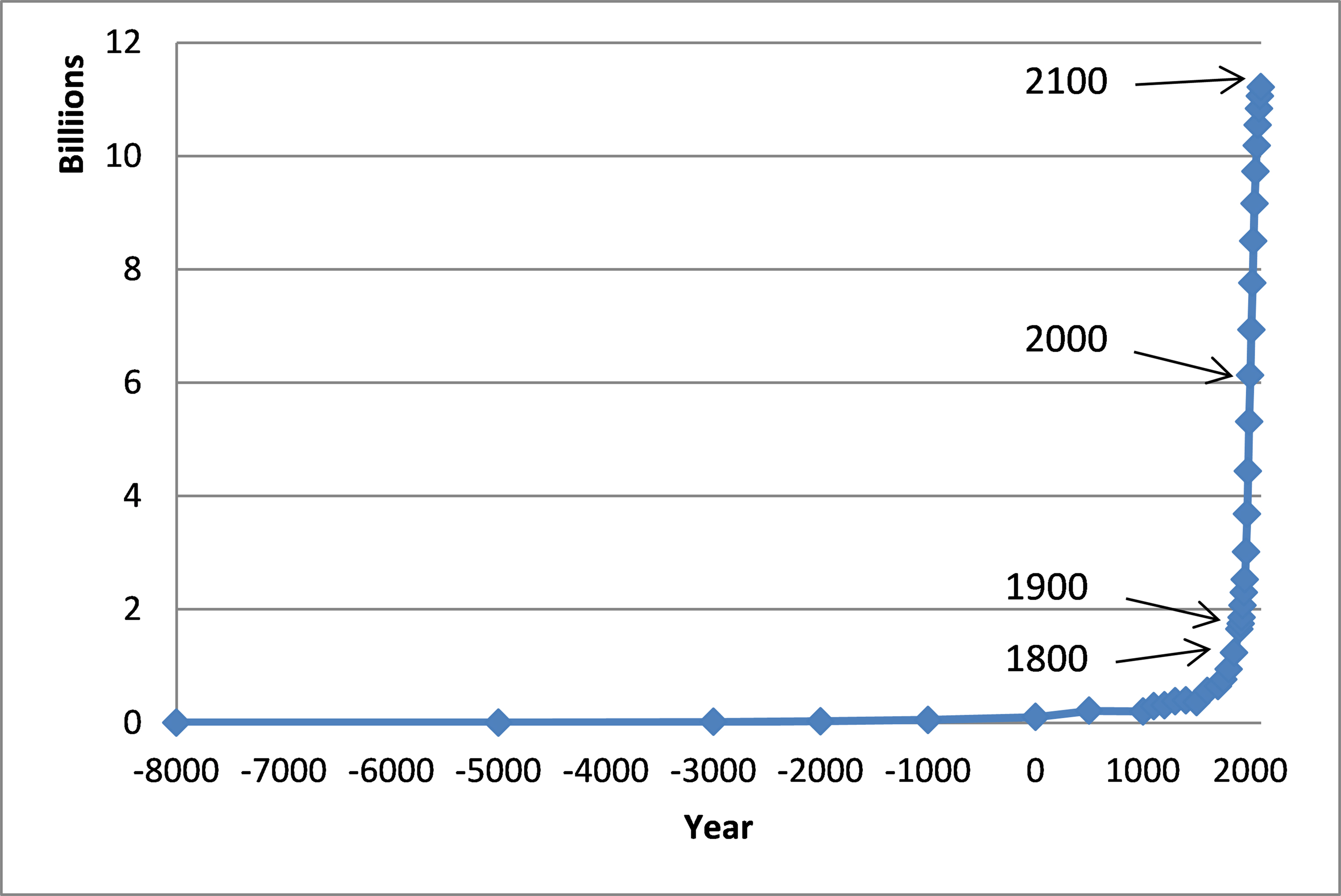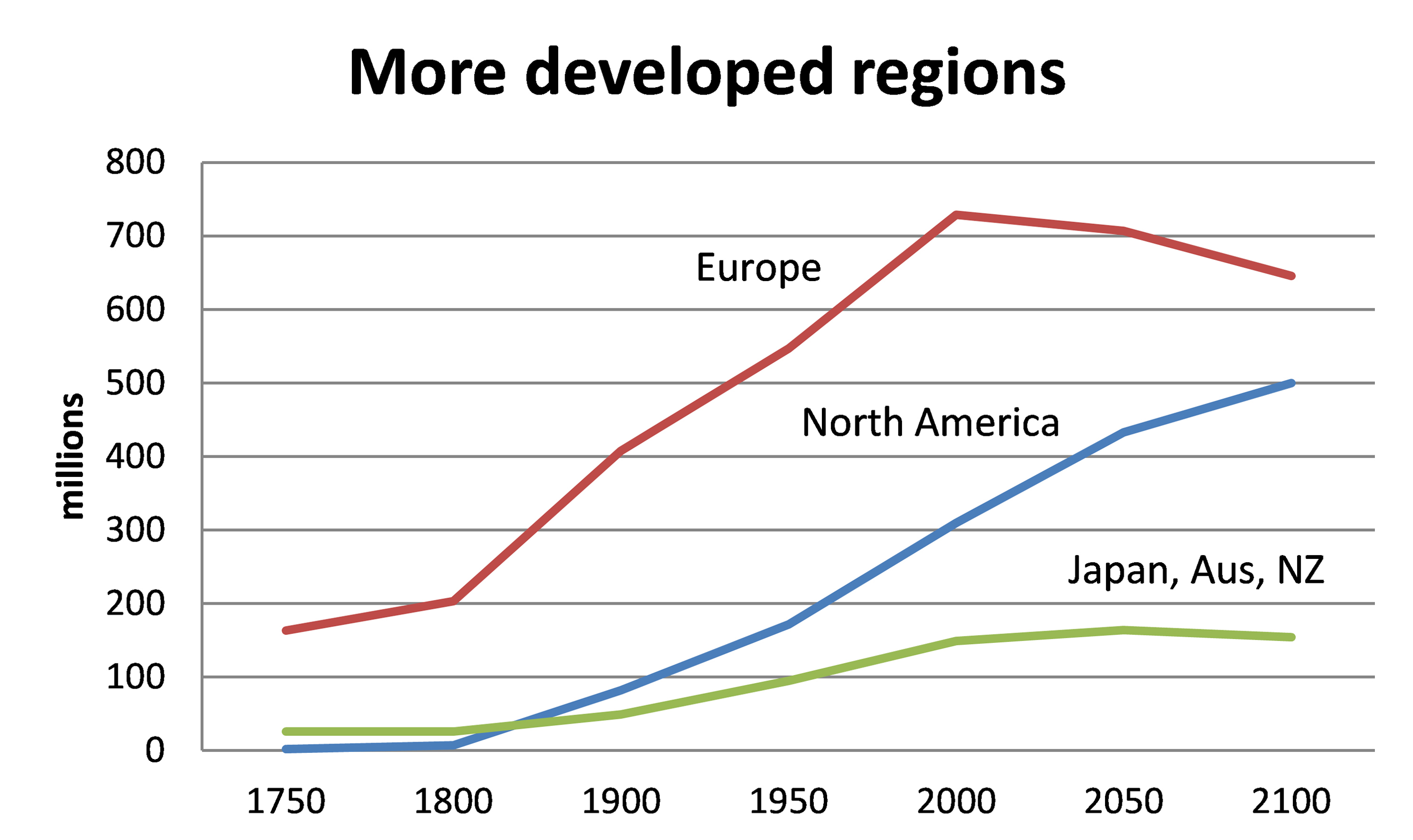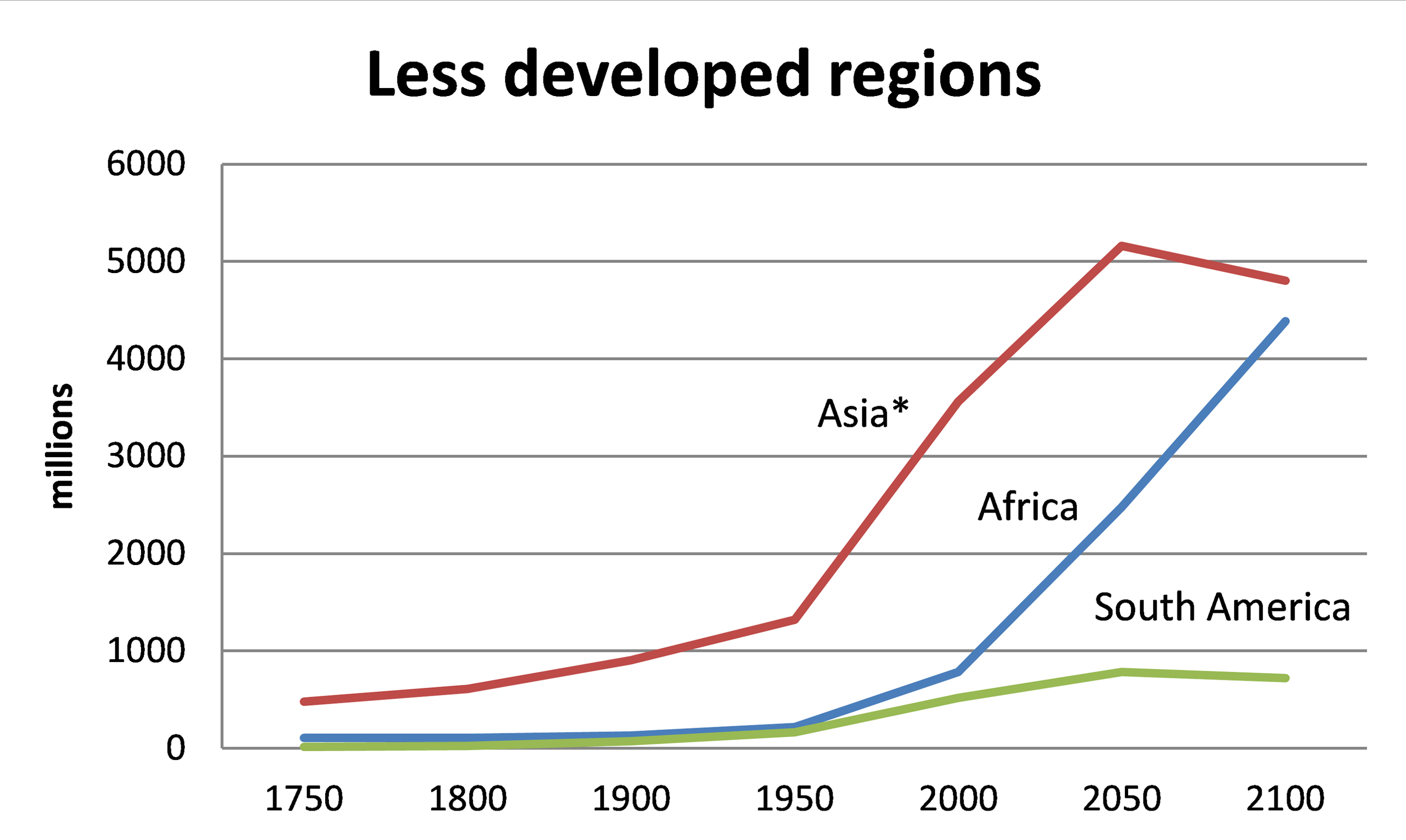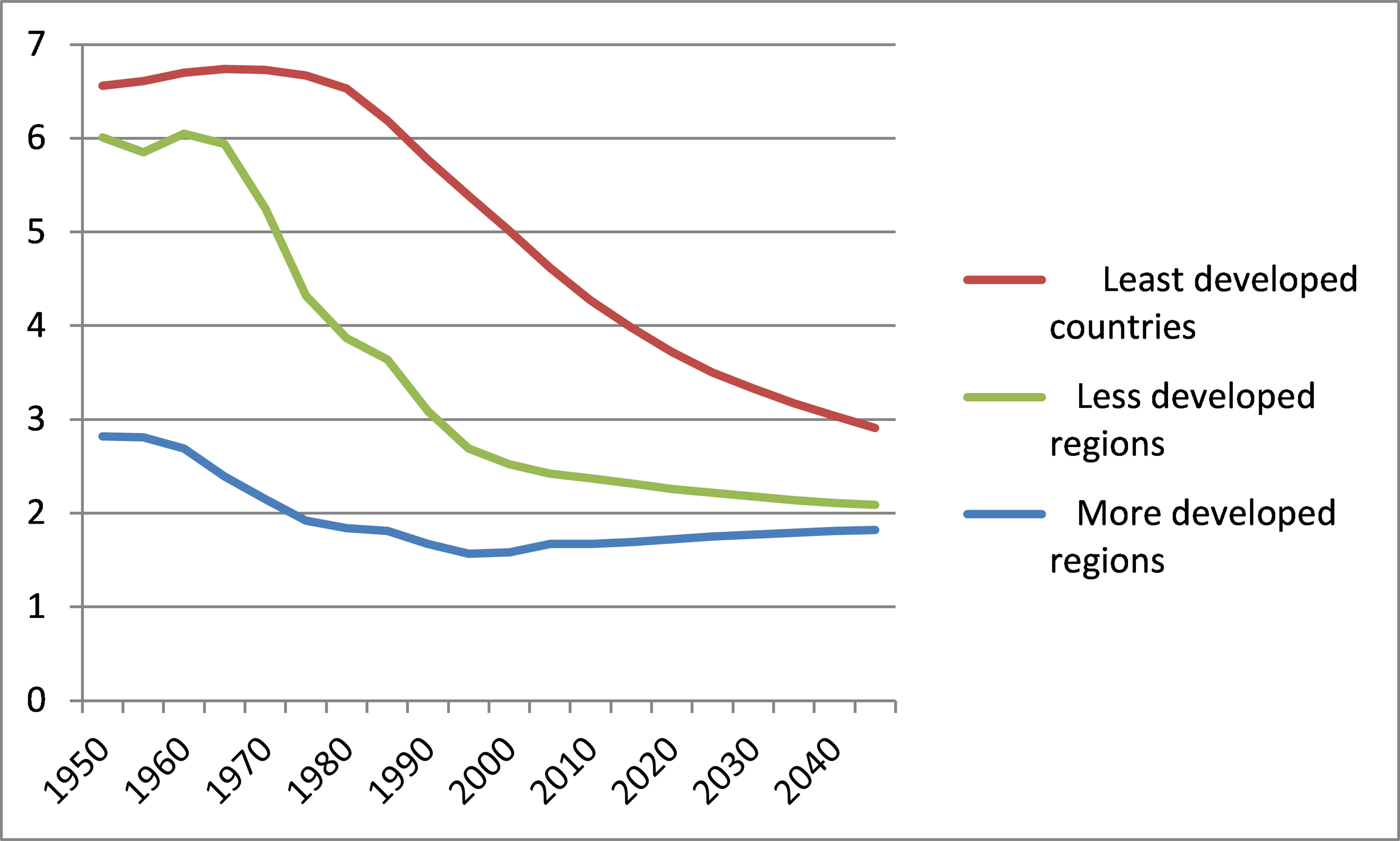Challenges
WORLD POPULATION TRENDS & PROJECTIONS
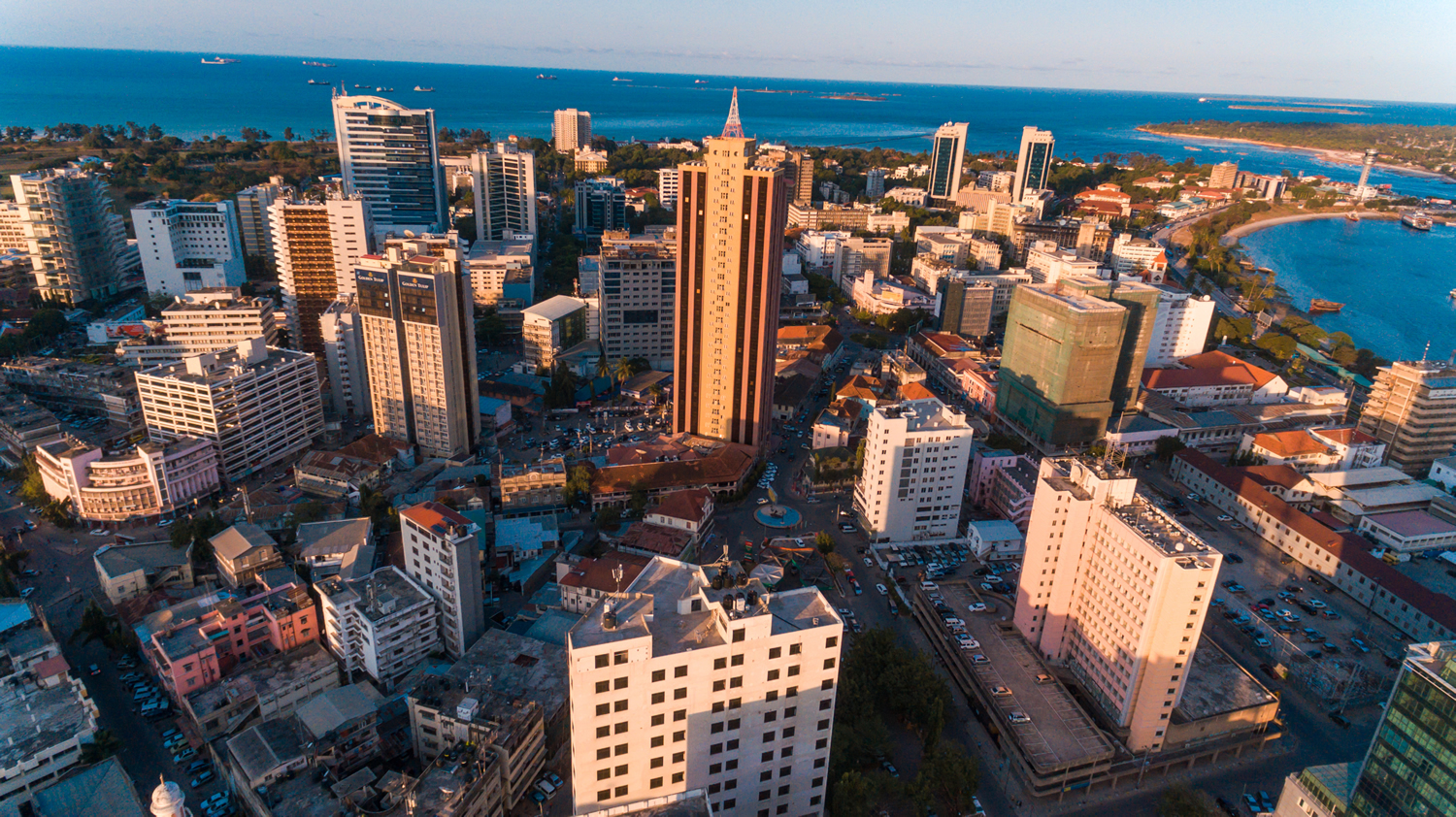
It took about 200 thousand years for homo sapiens, living as hunters-gatherers to reach a population size of 4 million, which is about the populati on size of the municipality of Los Angeles today. Birth and death of the earliest humans almost leveled out and growth was very slow or absent. The Agricultural Revoluti on, about 10 thousand years ago, meant a slight increase in the speed of growth, because of the availability of a bett er diet. Between the years 0 and 500 the world populati on stagnated at a size of about 200 million. In the Middle Ages the growth path was sti ll bumpy, such as in the 14th century, when plague and war took some 30 million lives. Aft er the 17th century world populati on growth started to take off. Today, some are drawn to the conclusion that the world is no longer able to sustain current massive populati on growth, which has mushroomed since the 20th century.
See figure 1: The explosion of the world populati on size.
The process behind this growth is called the Demographic Transiti on: a fi rst stage of very slow growth where both the number of children per woman (ferti lity) but also mortality is high, leading to very small or zero growth; a second stage of high growth, in which mortality is decreasing, whereas ferti lity is sti ll high; and a third stage of slow or zero growth again in which both ferti lity and mortality is low. All developed countries have arrived in the third stage, and most developing countries are in the fastgrowing second stage today.
See figure 2: Population size in world regions 1950-2100.
Mortality has decreased substanti ally, not only in the developed, but also in the least developed regions of the world. Life expectancy in the least developed countries has increased with 6.2 years between 2005 and 2015, from 56.4 to 62.7, compared to an increase of ‘only’ 2.8 years, from 75.6 to 78.4, in the more developed regions. Although the gap in life expectancy between developed and developing regions is sti ll large, it is narrowing. The key questi on for the future development of the world populati on is how fast ferti lity will drop in the least developed regions of the world, especially Africa. This is the component surrounded by the highest uncertainty for the future. Although according to the UN all countries will converge towards a value around 2 children per woman in 2100, especially in the least developed countries current levels are sti ll far off from this target, and It took about 200 thousand years for homo sapiens, living as hunters-gatherers to reach a population size of 4 million, which is about the population size of the municipality of Los Angeles today. Birth and death of the earliest humans almost leveled out and growth was very slow or absent. The Agricultural Revolution, about 10 thousand years ago, meant a slight increase in the speed of growth, because of the availability of a better diet. Between the years 0 and 500 the world population stagnated at a size of about 200 million. In the Middle Ages, the growth path was still bumpy, such as in the 14th century, when plague and war took some 30 million lives. After the 17th century world population growth started to take off. Today, some are drawn to the conclusion that the world is no longer able to sustain current massive population growth, which has mushroomed since the 20th century.
See figure 1: The explosion of the world population size.
The process behind this growth is called the Demographic Transition: a first stage of very slow growth where both the number of children per woman (fertility) but also mortality is high, leading to very small or zero growth; a second stage of high growth, in which mortality is decreasing, whereas fertility is still high; and a third stage of slow or zero growth again in which both fertility and mortality is low. All developed countries have arrived in the third stage, and most developing countries are in the fastgrowing second stage today.
See figure 2: Population size in world regions 1950-2100.
Mortality has decreased substantially, not only in the developed but also in the least developed regions of the world. Life expectancy in the least developed countries has increased with 6.2 years between 2005 and 2015, from 56.4 to 62.7, compared to an increase of ‘only’ 2.8 years, from 75.6 to 78.4, in the more developed regions. Although the gap in life expectancy between developed and developing regions is still large, it is narrowing. The key question for the future development of the world population is how fast fertility will drop in the least developed regions of the world, especially Africa. This is the component surrounded by the highest uncertainty for the future. Although according to the UN all countries will converge towards a value around two children per woman in 2100, especially in the least developed countries current levels are still far off from this target, and small differences in fertility will have large effects on the projected size of the population. The UN expects the populati on of Africa to be 4.5 billion in the year 2100, based on the assumpti on that the number of children per woman will reduce from its current rate 4.7 to 2.1 in 2100. However, if the fertility rate reduces to ‘only’ 2.7, this will make a difference of 1.7 billion more African inhabitants (6.2 billion), a difference which is much more than the current population the size of the continent (1.1 billion). However, other world populati on projections are less alarming. The key to reducti on of ferti lity is universal education, reproductive rights and family planning. Education has many benefits: higher incomes, better diets, housing and hygiene, as well as healthier lifestyles. This reduces infant and child mortality and therefore the need to have many babies. When taking into account the miti gating effect of future levels of education for each country, the total world population may not grow to 11 but to nine billion inhabitants in 2100. The population of Africa will in that case increase with “only” 2 billion. That, of course, although still a major challenge, would be good news for this continent, and for the prospects of feeding its inhabitants in the coming century.
See figure 3: Number of children per woman by world region 1950-2050.
A growing world population also means more migrants, although the share of the migrants in the total world population has dropped from 3.5 per cent in 1990 to about 3 per cent in 2015 (290 million). Most of the migrants have moved for work, study or family reasons, but especially in the developing countries the number of refugees has increased dramatically in the last decades: from 20 million in 2000 to more than 60 million today.
War, famine and increasingly also climate change are triggers that force people to leave their home region. It is no coincidence that the most fragile countries are also the fastest growing countries, especially in Africa, which has led to large refugee flows. Most refugees settle within their country of origin, as internally displaced persons, only a small part becomes international refugee (25 percent), an even smaller part asylum seeker (10 percent), and those granted asylum (asylum migrants) are again only a fraction of the total number of asylum seekers.
Compared to the population growth in Africa the migration component is small, but for especially Europe migration makes the difference between population decline and stabilization or growth.
AFRICAN URBANIZATION

Africa’s population growth is stunning. After centuries of stagnation around 100 million inhabitants, the 20th Century meant an almost tenfold increase. Currently Africa’s population is close to 1.2 billion. In 21st century it will most likely grow to 3 billion. Of course there may be dramatic epidemics, and many more victims of famine, wars and violence. But these dramas also hit Africa in the 20th Century and despite that, the African population exploded. Although the number of children per woman is gradually going down now, there are so many young women in Africa that even with lower average fertility the population increase will be higher than anywhere else.
An even more rapid population change is Africa’s urban explosion. Around 1960 Africa was rural. Only 20% of its population (65 million) lived in urban areas. Currently there are 475 million urban Africans: a sevenfold rise. By 2050 there may be 1.2 billion. This implies that in the next 35 years urban services and livelihoods have to be organised for another 725 million urban dwellers. And while there were few cities with more than 1 million inhabitants in 1960, there are more than 50 now, and there will be many more in 2100.

Ton Dietz African Studies Centre
Two remarks must be made to put these observations into perspective. First, weak statistical services and a very mobile population, of which many live both urban and rural lives, lead to notoriously unreliable data. Second, urban Africa recently became the engine of economic growth and urban incomes in Africa are rising steadily. Of course there are many poor people in cities, and the living conditions for many of them are appalling. But many other Africans live rather luxurious lives and it is not difficult to find urban areas of affluence populated by an emerging middle class with rising expectations.
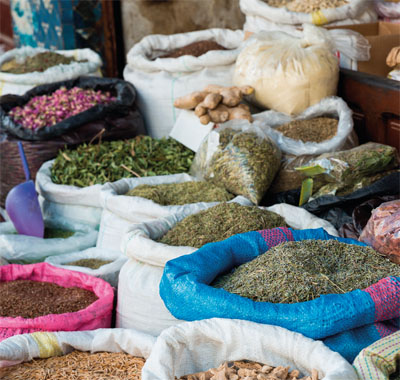
Africa has been the economically fastest growing continent during the last few years, even faster than Asia. Although nothing is certain, it can be foreseen that the enormous social and economic energy created by many relatively young, healthy, well-educated and well-connected urbanites has created a momentum of self-sustained growth. Even if the global demand for Africa’s resources will become lower than in the recent booming decade, this growth will continue. Although Africa’s cities do produce food (urban agriculture!), and although many African urban people do have family linkages to rural food suppliers, by far the largest part of urban food demand has to be provided from elsewhere.
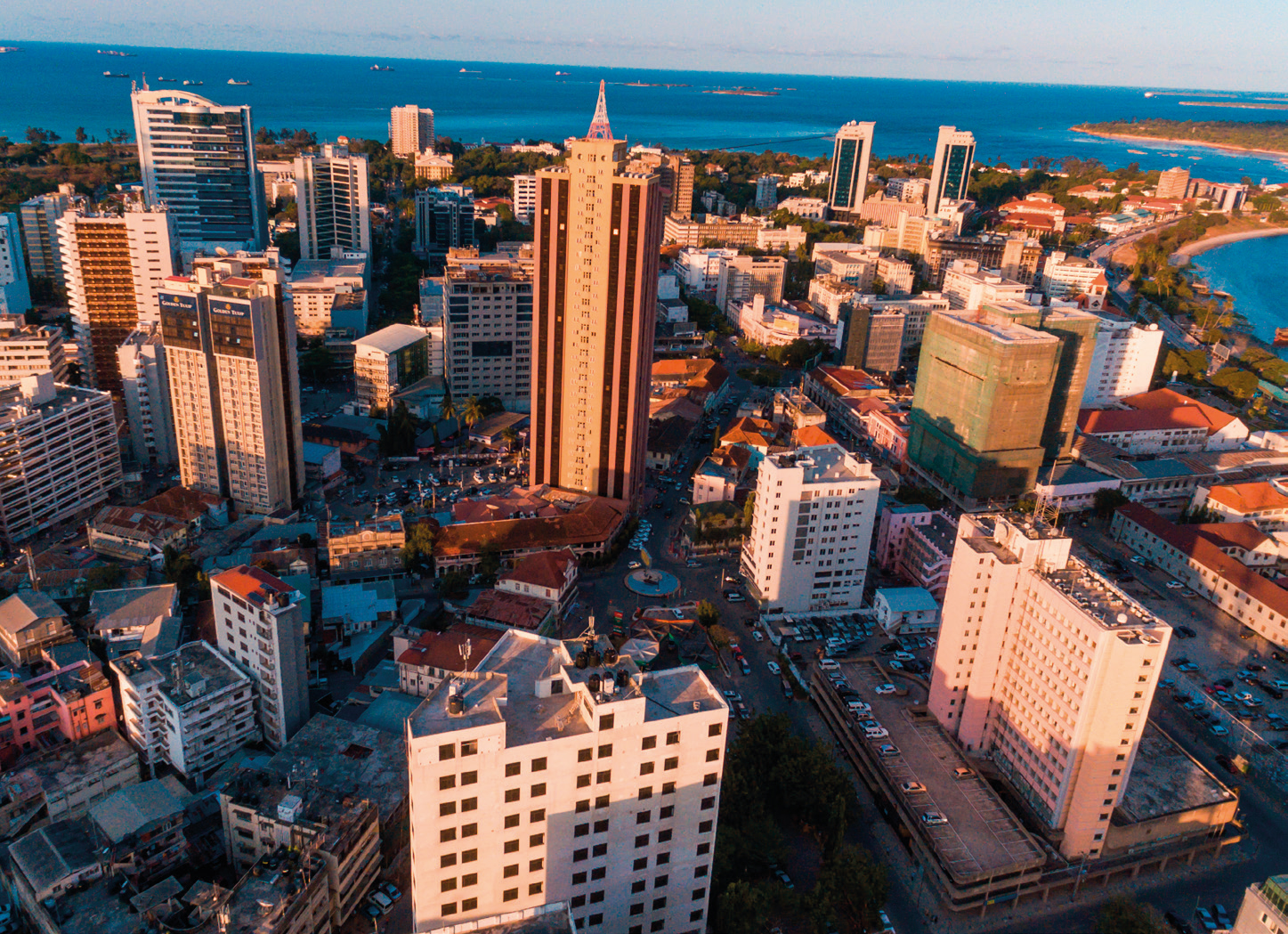
Africa’s agricultural growth figures reveal that during the last decades the production of basic food has rapidly increased almost everywhere, both in area and in yield. And also the production of luxury food such as dairy, eggs, meat, fish, fruit and vegetables shows very rapid growth in many places. Many opportunities exist for food providers in the hinterland of the major African cities to provide urban consumers with basic and luxury food. Thriving urban markets, shops and supermarkets are a testimony to that trend.
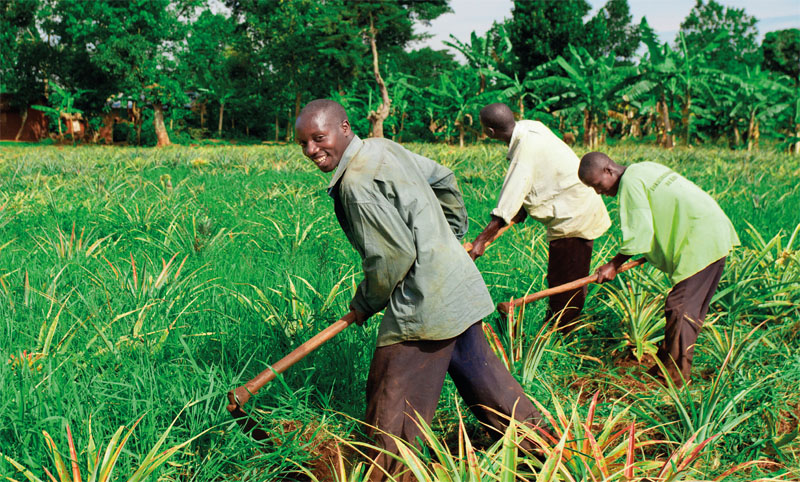
There are challenges that have to be dealt with. Food imports have risen sharply to partly provide for the urban food demand. And a proportion of those imports can be regarded as dumping that undermines the competitiveness of local production. On the other hand, substantial areas of African fertile soils are used to produce food for the global market, competing with production for the local demand. African governments hardly invest in the agricultural sector and the budgets for agrosupport are much too low. All these challenges need to be taken into consideration when trying to provide answers on how to feed tomorrow’s cities in Africa.
But there are also many opportunities for those who want to support the food boom in Africa. The current approach to support value-chain improvements is a step in the right direction. It could even be better if the approach would be widened to become an agro-innovationsystem approach: connecting the energy of food producers (farmers and agro-industries; employers and employees), with the transport and trading sector, and with the many types of input providers, banks and insurance companies, food safety agencies, the agro-education, extension and knowledge sector, both public and private.
Cities and Diets

Can good food become the new fast food?
Few factors have more impact on environment and human health than the consumption of food. All over the world solutions are being sought for urban supply. The current world population of 7.6 billion is expected to reach 9.8 billion in 2050 with 70% of the population living in cities. 90% of this urbanization will happen in Africa and Asia.
Progressive urbanization and globalization are leading to the homogenization of urban diets. The global proliferation of transnational retail corporations and fast food chains certainly brought more food diversity. But also a greater exposure to unhealthy foods, stimulating the consumption of energy dense foods high in salt, sugar and fat. As a consequence, the number of people affected by chronic noncommunicable diseases (NCDs) related to food consumption is spreading rapidly to the emerging markets of Asia and Africa. Particularly the accelerating rates of overweight and obesity among children is CITIES AND DIETS troublesome. Readily 75% of all overweight children under five live in Asia and Africa. With a looming epidemic in NCDs, everywhere in the world, cities are facing the pressing issue of reversing this trend and creating a sustainable and healthy food system.
In the urban food environment, unhealthy processed and fast-food is omnipresent, cheap and convenient. Healthy food choices are constrained by the typical realities of urban living, such as a lack of time for shopping and meal preparation. Moreover, food choice is related to the social and economic status of citizens and linked to disparities in the accessibility of healthy foods. Higher price levels, inconvenience, unavailability and lower food health awareness are among those disparities. Socio-economically
vulnerable groups suffer from demonstrably less healthy dietary patterns and poorer health. Overweight and obesity, for example, are strongly related to lower income and lower education levels.
To mitigate the risks of rising inequality especially in the light of the progressing urbanization of poverty in LMICs, urbanization needs to be paired with appropriate policies, institutions, business models and strategies. Ensuring that all urban residents, including the poor, have access to high-quality diets is a key priority. Urbanization
implies that more and more people become reliant on food purchasing. But who’s going to capture this growth in an inclusive, sustainable, safe and healthy way?

To what extent can good food become the new fast food?
Ensuring the ecological and nutrition quality of food and diets requires a broad approach. It needs to include the integration of food supply into urban planning, food-based dietary guidelines and labelling, technological innovations and the revaluation of business models and responsibilities. The good news is that health awareness across the globe is growing, in which consumers seek fresh, natural and minimally processed foods. Citizens and consumers tend to be much more involved in food and nutrition. Moreover, in emerging-markets health and safety attributes are specifically highly valued and consumers, including the poor, are also most willing to pay a premium for food safety and health benefits. At the same time, a general rise of food safety concerns and eroding confidence in high technology food engineering, put the industry and policymakers before a major challenge.
Urban economies of scale can make it easier for business to innovate, but technological solutions to ensure urban food security need to integrate societal acceptance for an inclusive fit.

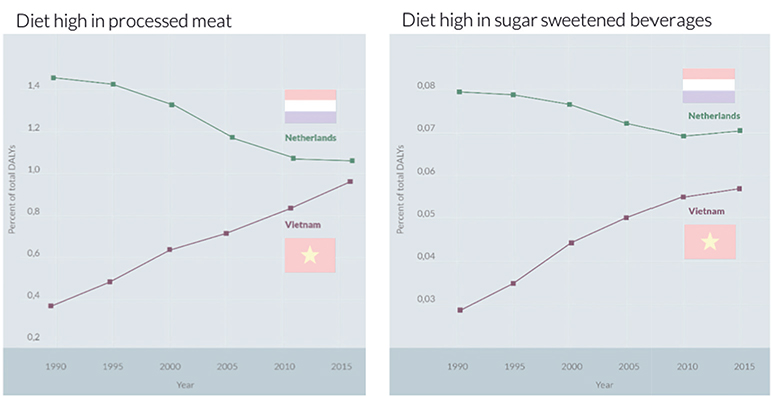
Prof. dr. Sigrid Wertheim-Heck
Food and Healthy Living,
Aeres University of Applied
Sciences

Climate change & cities

The 2014 assessment report of the Intergovernmental Panel on Climate Change stated “warming of the climate system is unequivocal, as is now evident from observations of increases in global average air and ocean temperatures, widespread melting of snow and ice and rising global average sea level.” The human-induced warming has reached approximately 1°C (±0.2°C likely range) above pre-industrial levels today and will continue to rise if no action is taken.
Climate change caused by emissions of greenhouse gases such as Carbon Dioxide, Methane and Nitrous Oxide will aff ect all regions and sectors. The observed recent changes in climate are primarily linked to human interference in the climate system and not to natural causes. The human interference is mainly related to the use of fossil fuels and change in land use. Climate change manifests itself in various ways: from higher temperatures and less cold periods, changes in rainfall patterns and
intensities, more and prolonged droughts and heat waves, sea-level rise and more extreme events such as heavy rainfall and hail spells, storms and hurricanes. The exact impacts vary per region or location.
Currently just over 50% of the total populat on lives in cit es and this is projected to increase to almost 70% in 2050. Cit es are responsible for 70% of the carbon dioxide emissions. With higher product vity and higher per capita income, cities will determine how we consume and produce food and utilise the earth’s resources. Urbanisation creates opportunities but also comes with problems such as air pollution, waste and health most of which are directly or indirectly aggravated by climate change.
Cities around the world are vulnerable for climate change and at risk of floods, droughts and heat waves. The number and intensity of heat waves are likely to increase and are amplified in cities: build-up areas absorb more heat, high-rises block cooling winds and limited green space provides less cooling through evaporation. Heat waves combined with air pollution can have substantial impact on human health; the 2003 and 2010 heatwaves in Western Europe and Moscow led to thousands of casualties. As the atmosphere warms, it also holds more moisture. This leads to heavier rainstorms and inundation if drainage systems are unable to cope rapidly with the excess water. Many cities replace archaic drainage systems in order to deal with this challenge, but often not soon enough.
For many cites along the coast or in deltas, the projected sea level rise will enhance the hazard of floods, storms and hurricanes that put buildings, infrastructure, health and the social fabric of cities at risk. Even if effective levees and barriers are constructed, flooding might still occur if barriers are closed against high tides and extreme river runoffs strike simultaneously. Such synergetic situations are not uncommon. Nature-based solutions that use ecosystems services at landscape level can be used to reduce risks and vulnerabilities. In the tropics, warm ocean water also feeds energy to storms, hurricanes and typhoons. Katrina in New Orleans, Sandy in New York and Haiyan in the Philippines swelled to devastating strengths due to warmer ocean water. In Europe, the floods of 2018 killed 69 people in Italy, France, Spain, United Kingdom and Portugal.
Also the impacts of climate change on food production vary per region. In parts of Europe and Asia, over the last 10 years, changes in precipitaton have led to more frequent droughts and reduced water availability for (food) crop. And this will intensify and continue. In selected places with abundant surface or ground water, water shortage can be balanced by enhanced irrigaton or improved water harvesting techniques (as developed in climate smart agriculture projects). However, IPCC assesses that climate change undermines food security in dry areas. This immediately jeopardizes the food and water supplies to cities in the regions concerned. In coastal areas, agriculture can be threatened by sea level rise and saline intrusion.
Moreover warmer winters and summers have a crucial influence on crop growth: the timing of germinaton, crop establishment, growing, flowering and seed filling. Extreme high temperatures during the early seed-setng period will irreversibly stop grain flling and will signifcantly reduce yield. Warmer winters can limit some crops like wheat to induce flowering. Some areas, on the contrary, will become more suitable to grow specifc crops. See vineyard expansion in the Netherlands, England and even southern Sweden. Although IPCC acknowledges such positive effects, it concludes that globally the negative impacts of climate change dominate. Around the world research is working on innovative solutions to deal with these challenges: drought and saline tolerant crops, climate services, adaptve water management, sustainable soil management.
The most recent findings seem to indicate that our climate changes faster than earlier projected. If true, this makes it all the more urgent to put in place effective response actons both for reducing the emissions and for dealing with the impacts. Urban greenhouse gas emissions are influenced by a range of factors of physical, economic and social nature, by development levels, and by histories specific to the individual city, the cityDNA. In cities of medium and low-income countries the per capita energy use and emissions tend to be higher than those in cities of high-income countries. As the largest urbanizaton will be in medium and low-income countries, improved energy efciency of the transport system and energy
grids is a high priority.
And with innovaton a rapid development of alternatves can be undertaken, such as electric transport combined with smart grids. In the C40 initative already eighty cities are commited to actively innovate and address the challenges of climate change. They want to shift to carbon neutral energy system by 2050. The landmark Paris agreement set in motion various initatives and provided a global platorm for the cities to present their climate action for the first time.
The antcipated changes on food and fresh water supply will best be dealt with in an integrated way. Improved supply systems, water policies, waste management and health system need to address both mitigaton and adaptation. City consumers will have a deciding impact on how we organise the producton and provision of food. Their diets will determine the shape of our food system including the environmental aspects and integrity of food producton. For many cites around the world climate change is a driver to rethink their infrastructures, their relations with the surrounding rural areas and the way they deal with water, food and energy. Many of them now respond and take leadership and turn into living labs in order to become climate resilient and to improve quality of life.
Dr. Jan Verhagen
Dr. Peter Kuikman
Wageningen University & Research
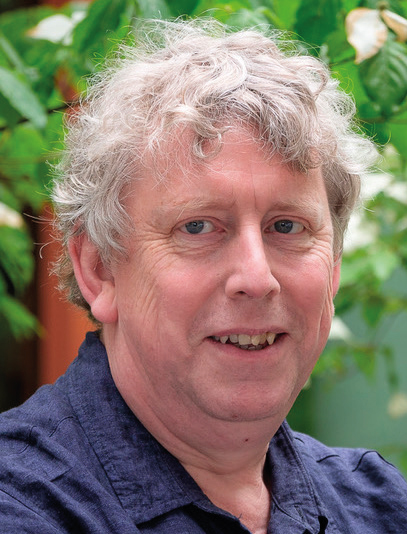
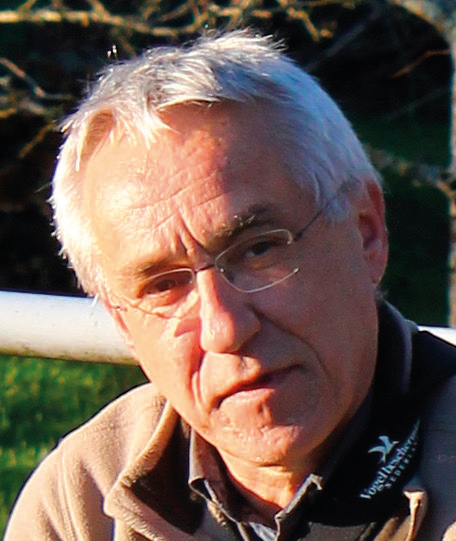
Water Scarcity
The agro and food industries are amongst the most intensive water users, even outdoing domestic consumption. In urbanised areas, people, industry and food production often have to share the same water resources. The pressure on water resources in these areas is high. Climate change and its enormous impact on water is widely recognised nowadays, and globally the areas most prone to the effects of climate change are highly urbanised areas. Further, sea level rise, excessive rainfall and periods of drought result in floods as well as incidental and structural water shortages. Responses to these threats are still blurred. An internatonial carbon reducton policy to avoid a temperature rise of more than two degrees may have been accepted, but its effects will only be felt in the long term. A similar policy to address water challenges is very much needed, but is not yet in sight. The Netherlands may offer an example of how to deal with this aspect of water issues.
Climate change is causing many pressing water management problems. In the short term, demographic changes, economic development and agricultural practces require water management plans that incorporate well managed economic and agricultural development and comprehensive spatal planning, especially in rapidly urbanising delta areas. Mass migraton from rural areas to urban delta areas is causing logistcal challenges related to water and food. The water infrastructure everywhere needs to be expanded and updated, both to ensure universal safe drinking water and to treat domestic and industrial waste water. But this requires major investments which are not always available. There is a serious financing gap estimated at USD 1,200 billion up to 2030 which cannot be met by public financing alone.
Good practice in water management
Good water management in cities must be done at the regional level to ensure enough water for both urban and agricultural needs. It is a myth that most of the water extracted from lakes, rivers and groundwater reservoirs is used for human consumpton. In fact, most is used for agriculture - mainly for irrigation in dry areas - and for processing agricultural produce. Crop irrigaton is one of the most exhaustive uses of water. In hot climates, the water evaporates, leading to soil degradaton and reduced agricultural productvity. Other causes of degradaton are the use of salt-rich water, poor drainage and seawater intrusion, often caused by the overexploitaton of groundwater aquifers. Inital steps to improve irrigaton practices are training of farmers, introducing new technologies such as smart fertilisaton and drip irrigaton, and ensuring adequate capital investments. Coupling agriculture and urban water management is essential. Urban water treatment using the concept of cascading water management can provide clean irrigaton water and new fertlisers for agriculture. The over-abundant use of water in agriculture leads to serious water level problems in rivers, lakes and reservoirs. Almost half of China’s rivers are drying up rapidly or becoming heavily polluted. Polluton is not only caused by industrial actvity and inadequate water treatment, it is also caused by the largescale leaking of nutrients in intensive farming and agriculture. Smart fertilisaton practices, reducing the amount of fertliser used and preventing run-off are important to keep soil and water sources healthy.
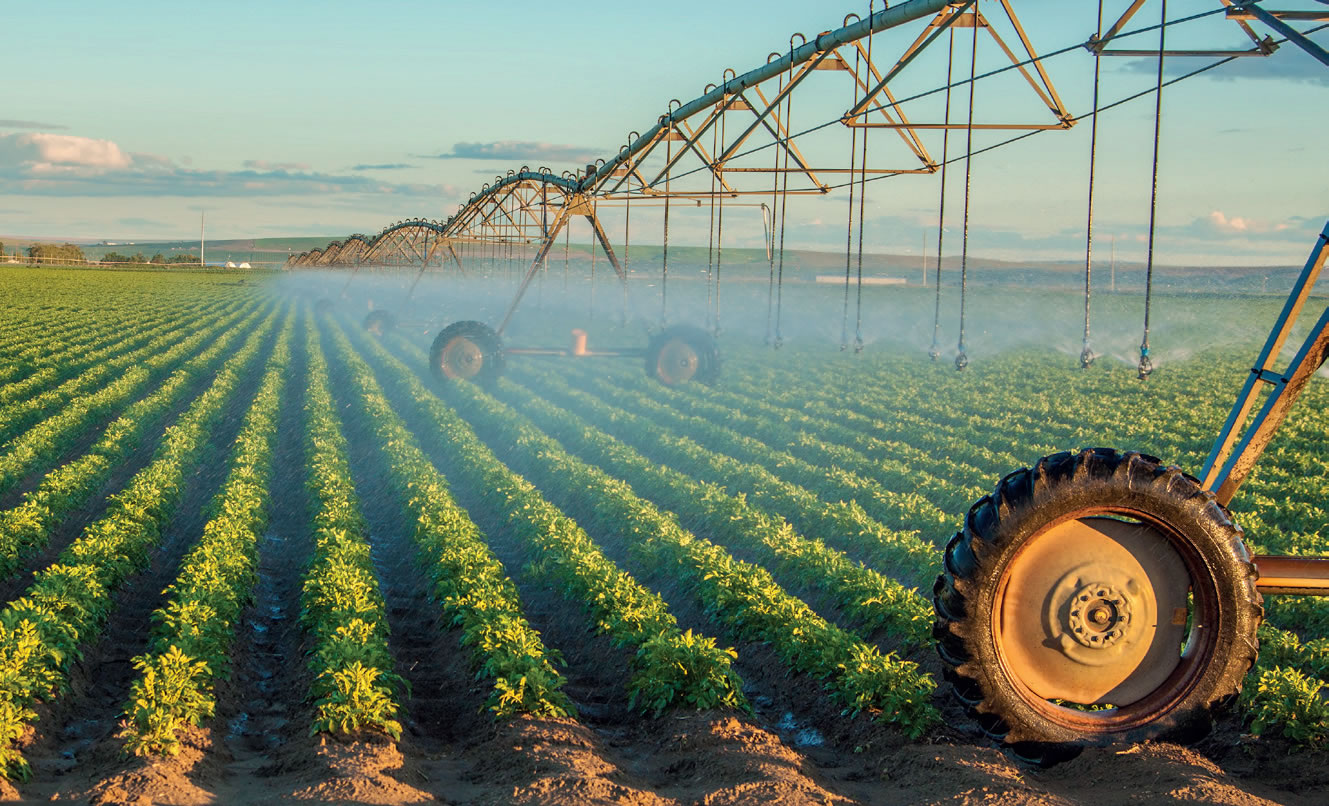
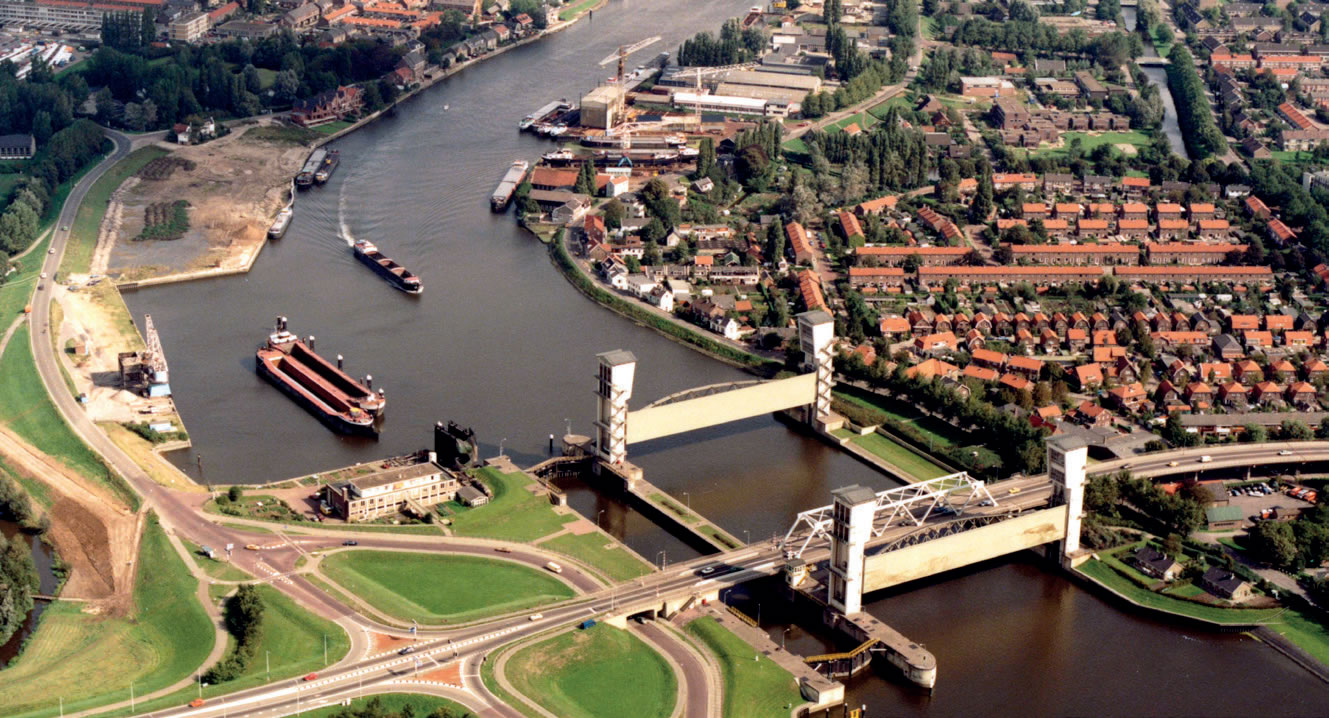

Prof.dr. Sybe Schaap
Chairman Netherlands Water Partnership
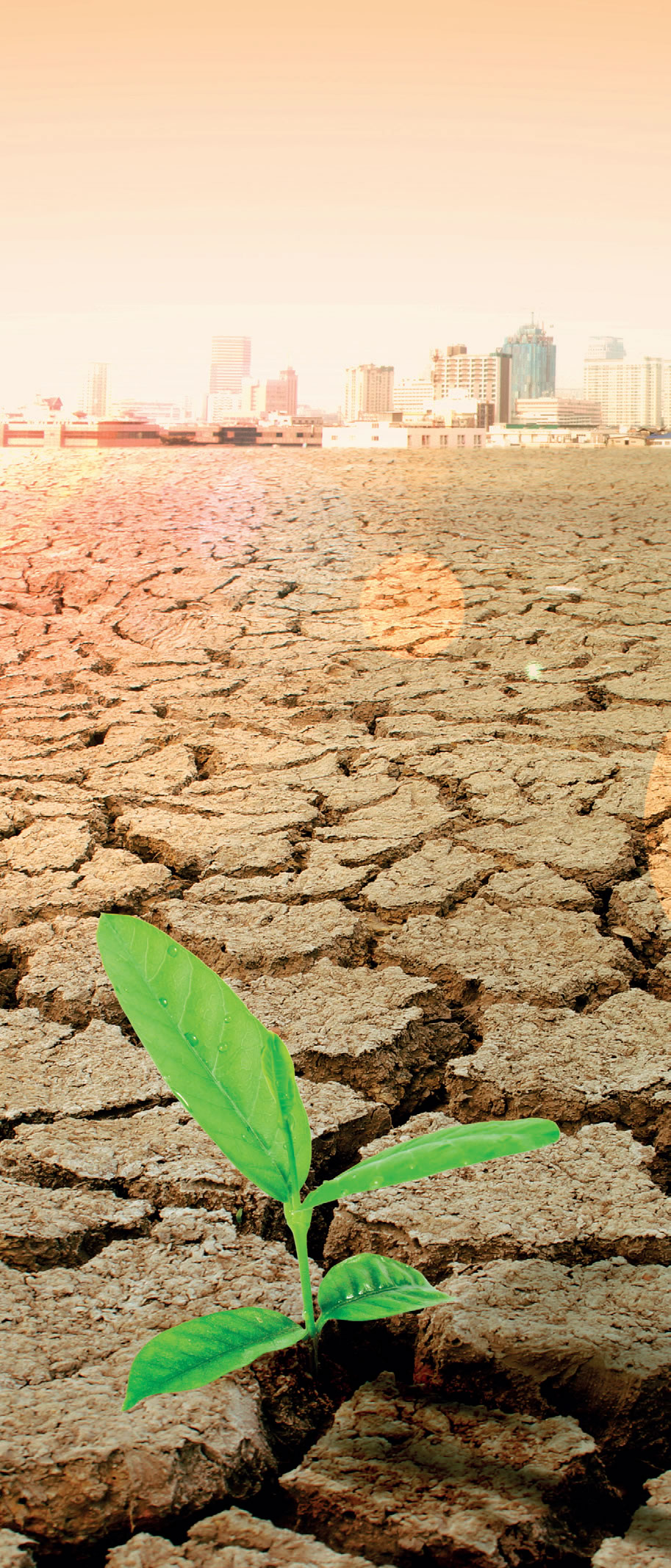
A call for coordinated water management and good financial engineering
When water use is not coordinated in catchment areas, the downstream areas will be victims of upstream activities and profiteering. Similarly, the over-extracton of groundwater by urban populatons leads to the rapid sinking of ground-water levels and land subsistence, resulting in higher flood risks. In urban areas, the groundwater used for domestic water supplies must be replaced as quickly as possible by surface water. This requires hard or natural infrastructural measures such as dikes and dams to reduce the risks of flooding in flood prone areas. It also needs a well-managed system and heavy investments.
The Netherlands has adopted a holistic approach that brings stakeholders together to create long term integrated planning. In one example, a river basin management plan involves stakeholders such as municipalites, drinking water companies, citzens, nature organisatons and water authorites to improve the water quality of the rivers.
The current challenges of too much water, too little water or too dirty water are pressing. As mentoned above, the rapid urbanisaton of delta areas is putng pressure on the agricultural supply. Agricultural systems need modernisaton, not only in terms of technology, but also in developing innovatve skills. The problem is not so much the availability of technology but the combinaton of integratng technology in water management and agriculture, and designing projects in such a way that they become bankable and atract private finance when public finance is not available. Institutions, laws and governance practices need to be developed to meet this need. The process of urbanisation in delta areas should be accompanied by the development of adequate governance and early stage financial engineering. If projects are not engineered beter financially, it will be very hard to address the challenges. In the Netherlands, a concerted effort is being made by public and private entities to build the Dutch water sector’s project development skills and involve financiers at an early stage to increase the bankability of projects. Its governance structure that has matured over the centuries may serve as an example to address water management issues worldwide.
BIO-BASED ECONOMY

55% of the worlds’ human population live in urban areas and is expected to increase to 68% by 2050 as a factor of both population growth and rural-urban migration. Urban areas will continue to expand swallowing other land-uses such as agriculture and pristine natural environments. As the human population increases and the living standards in urban areas improve, greater pressure is placed on the environment. The demand for sustenance and consumer products requires further exploitation of natural resources and releases of emissions, which ultimately have consequences for human health and wellbeing.
A transition away from a fossil resource economy to a Bio-based Economy is a solution, that its advocates argue could help to mitigate environmental destruction. However, such a transition has potential challenges of its own.
The Netherlands provides an ultimate testing ground for such a transition for one particular reason, namely the limited availability surface area. The Netherlands is one of the most urbanized countries on the planet. Although the Dutch population is relatively small (17 million), the limited land mass makes the country quite densely populated. Despite having limited land and natural resources, the Netherlands ranks amongst the top 10 counties out of 199, in terms of the United Nations Human Development Index (HDI). It is also highly ranked in terms of GDP per capita, level of education, life expectancy and gender equality. The Dutch carbon footprint per capita, however, is also relatively high at around 30th out of 200 countries, depending on the data source and year.
Reducing carbon emissions requires changing consumer behaviour, including diet, switching to renewable energy sources and ultimately switching from a fossil-based economy to a Bio-based Economy. The Netherlands is well positioned for this transition. It is already a leader in bio-based innovations and has a sizeable chemical industry, altogether elements which open the way for high value biomaterial and knowledge exports

A Bio-based Economy utilizes biological processes throughout product supply chains and replaces therefore products derived from fossil resources. Organisms like algae, bacteria, commodity crops, crop residues, fungi, yeast and organic waste are the potential feedstock for producing different value streams. Biomass production starts with photosynthesis, converting sunlight, carbon dioxide (CO2) and water into oxygen, and chemical energy. The plant itself uses this chemical energy for building up plant matter. The plant matter or biomass can then be harvested and transformed into fuels, biomaterials and biochemicals including pharmaceuticals.
Essentially the switch from fossil resources to bio-based resources is a switch from one biomass, trapped under pressure beneath the earth surface for millions of years, to another biomass produced on the earth surface at present. Coal, natural gas, crude oil and lignite, were once plants and living organisms and have accumulated as a large stock of carbon in the subsurface. Extracting these fossil resources and using them for fuels and products means releasing this stock of carbon as atmospheric CO2. The transition to the Bio-based Economy boils down to replacing the extraction of subsurface fossil resources with harvesting biomass from the surface to create similar products: fuel, materials (plastics and manmade textiles) and chemicals (pesticides, cleaning products etc.).
The transition has two key benefits: Firstly, it provides countries who do not have oil reserves but can produce biomass, with resource security. Secondly, biomass production sequesters CO2 from the atmosphere, which is stored until the end product degrades or is combusted (in the case of fuel). In other words, extracting fossil resources increases the stock of carbon in the atmosphere; using biomass from the earth surface allows the existing stock of CO2 to remain constant.
Utilizing biomass however requires surface space exposed to sunlight and this is exactly where the biggest challenge lies. Even algae production requires large surface areas to achieve the economies of scale that would allow it to compete with fossil feedstock in terms of costs.

Alistair Beames PhD
Postdoc Circular Economy AMS, Amsterdam Institute for Advanced Metropolitan Solutions
Ultimately, the replacement of fossil resources with biomass may push for land-use change. Like its competitor, food or feed crops, it may turn previously pristine natural land into agricultural land and cause loss of biodiversity and destruction of natural habitats, that are already under threat due to ever expanding urban centres. The Netherlands does not have surplus natural areas that can be converted to agricultural land. The question is where it will obtain the biomass for powering the Dutch Bio-Economy. 53% of agricultural land in the Netherlands is dedicated to grassland for livestock grazing and 13% is dedicated to fodder crops for livestock. 28% is dedicated to crops for human consumption such as grains, potatoes and sugar beets. The remaining 8% is dedicated to timber, flowers, greenhouses and other agricultural uses. Some of Dutch grassland might be converted to crop production as feedstock for bio-based products, but most low-lying areas do not suit the purpose. Of the arable area worldwide a sizeable part is more suitable for plant conversion through animal husbandry than direct conversion into human sustenance. On marginal land a crop-change may help, fast growing willows e.g. may provide an example.
Worldwide part of the switch is already noticeable: the areas planted with oil-palm or soybean are a case in point. And they point to another factor in the equation, the role of trade. The Netherlands has always had to earn part of its keep outside its territory and rely on trade and investment. Consequently, like the imports of animal feed, some imports of biomass are already taking place. This is largely to supplement or replace coal in suitable energy plants. In addition, biomass from large, less densely populated areas, like its fossil competitors, is becoming subject to the law of comparative advantage.
Final relief may come in the end from a commodity of which the world has enough of and which is hardly being exploited for biomass purposes: the sea and the plants growing in it. Plant harvesting from water (sea or inland) has only just begun. On the Dutch coast, some experimental farming is already taking place. A (sea) weed industry may for food and biomass purposes produce unexpected advantages. Could in secluded areas, and after bio-fermentation, the residues of city-waste and manure from the intensive Dutch animal husbandry provide a boost for further, industrial development?
Time will have to tell.
Ate Oostra
Ret. Ambassador & -Director General Agriculture
URBAN METABOLISM AND ITS DNA

On Earth, water is the carrier of building blocks for each metabolism’s growth and survival. Without water, minerals cannot be absorbed by living organisms. So whether it concerns securing continuity of life on earth or discovering life in the universe, mankind is continually searching for water.
If we regard large growing cities as metabolisms with their own ‘DNA profile’, we see that many cities still underestimate the importance of clear potable water, leading to water-related disasters like flooding, disease and environmental catastrophes.
The metabolism’s five flows
An organism’s growth is defined by its inner pressure and chemistry, i.e. its metabolism. By comparison, a city’s future pathways and speed of development are defined by its mass and composition. If the notion of ‘water=food & food=water’ is commonly understood and forms the guiding principle for developing sustainable cities, then every city should try to understand its DNA by analyzing the metabolism’s five flows:
- Flow of people;
- Mass flows (e.g. water);
- Energy flows;
- Data flows and
- Value flows (e.g. money).
Separate cities, each own DNA
Cities like Mumbai, New York and Shanghai can be seen as separate metabolisms, each with own DNA profile, when we analyze their flows and differences in climate, geography, historical developments, culture, political systems, economic systems and structures. The same applies to the Netherlands, when viewed as one big city.
Characteristics in common
Nevertheless, these cities also have characteristics in common. They need:
- protection against flooding (from upstream, the sea or severe rainfall) as they are situated in a delta
- to feed 15 million people or more on a daily basis, requiring appropriate infrastructure.
- dedicated and resilient infrastructure to conduct mass flows throughout the city.
- sustainable solutions for energy security, to maintain the system and prevent chaos.
Main influence is smart use of data
As future cities develop their own specific DNA of hardware, software and orgware, the main influence on their flow dynamics is expected to be the smart use of data. With data as “the fuel of the city in the 21st century” (©: ‘Baron & Roodink’), reducing food waste will gain in importance. To find tailored solutions for sustainable environments in ‘urban metabolisms’, the specific DNA of the local metabolism must be determined. Feeding tomorrow’s cities entails urban planning becoming more circular and investment in food and water chain infrastructures being driven by more sustainable business models.
Changes in awareness and behavior
And implementing more inclusive solutions requires changes in awareness and behavior. This means investing in smarter and more dedicated packaging and logistics of goods (especially perishable products!), smarter use of data to enhance adaptiveness to the local DNA, sustainable integration of productivity and flows of fresh products within the metabolism’s boundaries (more vertical farming and domestic food production systems, etc.).
Internet of Things will help adapt
IoT offers dynamic, interactive infrastructures with maximum transparency (e.g. Blockchain!), which can be combined with concepts like parametric modeling and adapted to local specifics and functionality demand. Business models will probably also be adapted to more bio-circular and disruptive “glocal” solutions. And for monitoring, controlling and adapting supply chain operations (‘from farm to fork’), Digital Twin models will help adapt “glocal” systems to local DNA.
Future model: Bio-nodal network
Cities can thus be modeled as ecosystems and kept in balance with their environment, to promote their population’s health and wellbeing. Proper master planning in the chains will improve circular functioning of a ‘Bio-nodal network’, reducing losses in the fresh supply chain according to Reduce/Recycle/Re-use. This future model will reduce food waste through realizing Just-in-Time Deliveries and facilitating personalized diet orders. Combined with sensoring, Re-use opportunities will likewise be much easier to implement in society in a food-safe way. Recycling food components into food applications (instead of feed or digestion) will also offer new opportunities, although food safety remains a delicate matter.
Continual development and adapting
To conclude: in the interest of food security the lay-out and infrastructure of future cities needs continually to be developed and adapted in parametric models with learning algorithms, based on data exchange in neural networks and controlled by digital twin models, according to their ‘specific city DNA’

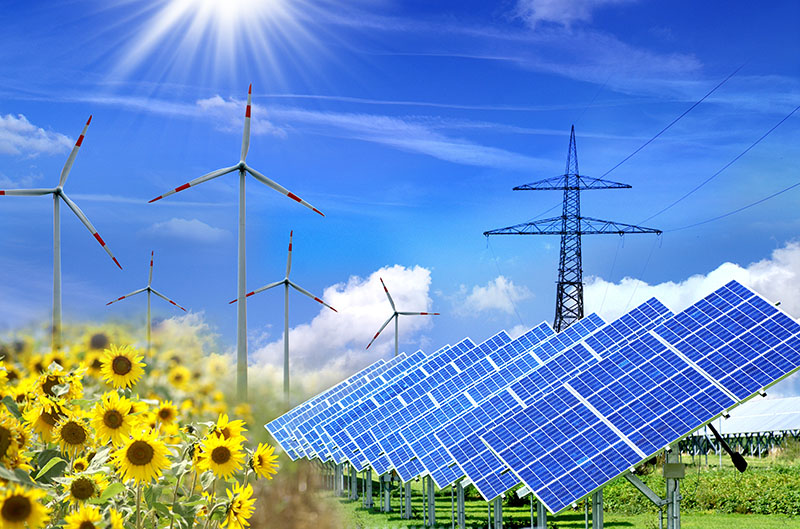

Wil Duivenvoorden
Domain Expert Chains & Logistics
Industry & Buildings, Royal HasKoningDHV
